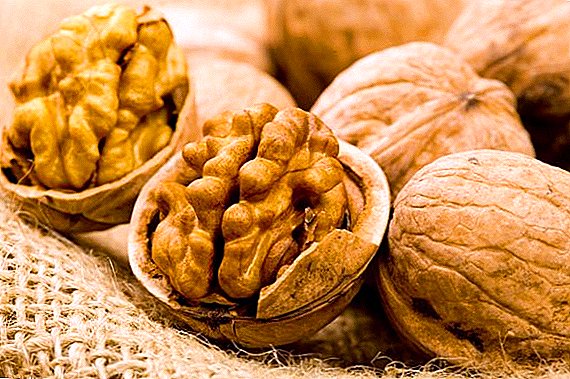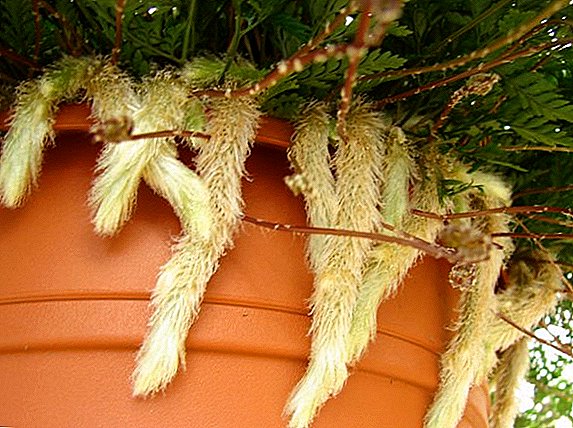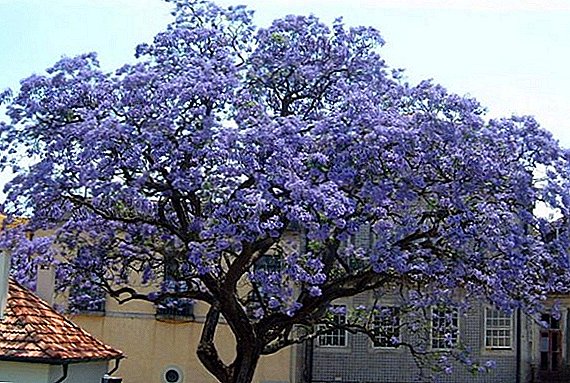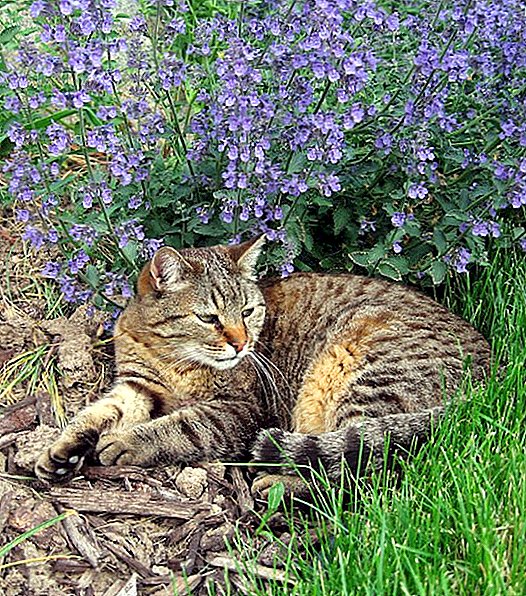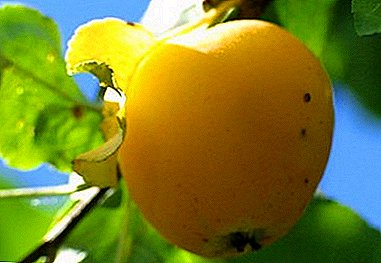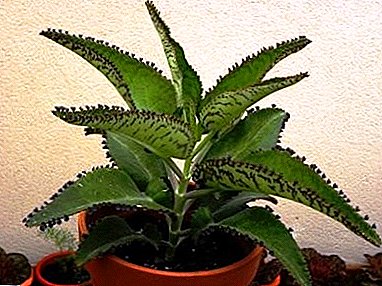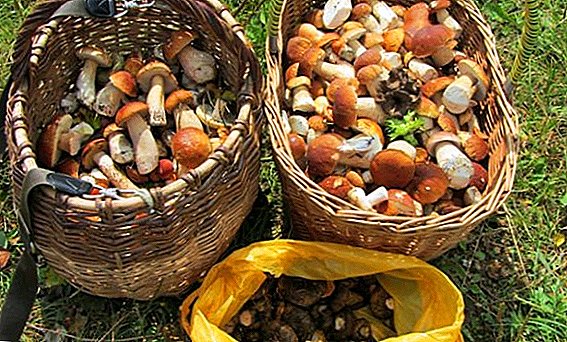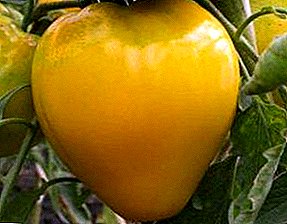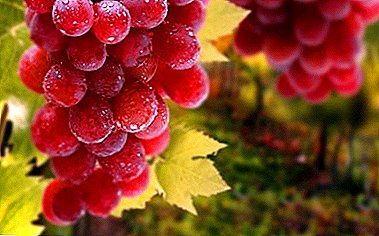
Among winemakers, the greatest love is pink grapes. Italian winegrowers say that you should try it first with your eyes and only then - to taste.
Indeed, full-blooded, poured, large berries of reddish and pink color are pleasing to the eye, they are extremely tasty and useful both in natural form and in drinks and desserts. "Pink" - quite an early grape variety. Description and photos of the variety - further in the article.
What kind is it?
Pink varieties are very popular both in private households and in industry. This grape is suitable not only for wines - compotes, desserts are made from it, and in its natural form, the berries are very attractive. Pink varieties have a bright, but unobtrusive taste, with a strawberry flavor and a rich aftertaste.
Among them are widely known Angelica, Gurzufsky pink and Flamingo.
The popularity is also explained by the fact that he feels great not only in the southern regions, but also in Siberia. Pink grapes are also widely used to decorate the hedges and facades of houses.
Appearance of grapes
 An unequivocal answer to this question is impossible - because there is not one subspecies, and many, differing both in appearance and taste.
An unequivocal answer to this question is impossible - because there is not one subspecies, and many, differing both in appearance and taste.
Berries are usually reddish or pink, but there are also light green, covered with pink uneven spots.
They may be tapered, oval, elongated or round. Shoots light green or reddish, pubescent. Leaves - from pointed to rounded, with pronounced "blades".
Flowers bisexual. The skin is thick or medium thickness. Vine is rich brown in color, bushes, as a rule, differ in strength.
Amethyst, Moldova and the Count of Monte Cristo also have bisexual flowers.
A photo




Breeding history
Front Asia is considered the birthplace of pink grapes (and grapes in general). It is popular not only in southern latitudes - France, Sardinia, Spain, the Americas, Australia, the southern regions of the CIS - but even in the Urals and Siberia due to its cold resistance (up to - 25 degrees Celsius).
Among the cold-resistant varieties should pay attention to the Super Extra, Beauty of the North and Arched.
Grade Description Pink
Pink grapes are different resistant to cold (usually up to -25 degrees) and to various misfortunes of fungal origin, such as gray mold and powdery mildews (mildew and oidium), usually has an early average period of maturation.
Gives stable good yields (usually up to 6 kg of berries from a bush), but with proper care and timely pruning. High yields are also demonstrated by the Podarok Magarach varieties, the Anniversary of the Kherson Summer Resident and Rkatsiteli.
Important: in no case should overload the bush!
Diseases and pests
 Resistance to fungi like mildew and gray rot - no lower than average.
Resistance to fungi like mildew and gray rot - no lower than average.
At the same time, the pink grape is a tasty trophy for wasps, sparrows, forty, beetles, peas moths. They erode shoots, spoil the leaves, berries. Nevertheless, you can resist them.
From birds it is usually fine-meshed nets, from wasps - traps, spraying, from insects and caterpillars - insecticides.
Poisons (Zone, Get, Delta-Zone) are also used against wasps, but this is, so to speak, the least humane method - they often prefer to scare them away, and to set traps for too curious.
Wasps, in addition to harm, also bring benefits by destroying grasshoppers, aphids, bedbugs.
You only need to choose "odorless" bait - a strong chemical "amber" will simply scare away the wasp and there will be no sense from such a trap.
Trichodermin, Gaupsin, Lepidotsid, Aktofid and others are drugs that protect grapes from ticks, leafworms and other moths.
Do not lose sight of such common grape diseases as anthracnose, chlorosis, bacteriosis, rubella and bacterial cancer. The preventive measures taken on time will help to avoid big problems.
Varieties
Most famous pink varieties are:
- Angelica - berries are red, very pleasant to the taste, with a dense skin. Differs in good frost resistance (to -23 degrees) and resistance to gray rot and parasites. Shoots mature well.
- Tayfi - variety of table purpose. The pulp is dense, crispy. In the middle of the berry - usually several (up to 3) seeds of medium size. Feels best in the southern areas. Average frost resistance and disease resistance.
- Transfiguration. Traditional pink grapes, the pulp of rich taste, very juicy. Variety amateur breeding, matures in the first decade of August. Low frost resistance, resistance to diseases, parasites, shoot maturation is also not good. For the winter requires an indispensable shelter. Differs in good transportability.
- Pink nutmeg. The berries of this variety are saturated with color and by the end of ripening become almost black. This variety has an average bush growth power and low frost resistance. True, it is more unpretentious to the soil conditions than the same White Nutmeg. Ideal for nutmeg wines.
- Pink haze. The "parents" of this variety are Talisman and Kishmish radiant. Very high resistance to powdery mildew, mold, high frost resistance. The shoots are very strong, 65% of them mature. Unpretentious, because ideal for wine-growers-novices.
- Pink sushi. Refers to the Armenian seedless varieties. Well resists oidium, but it is very attractive for the moth. Vigorous shrub, shoots maturation good. Differs in rich taste with a strawberry shade. The flesh is juicy, tender, without seeds.
- Pink Peach. This table variety was born by V.N. Krainov. Yields are good, stable. The berries are very large (average cluster weight is 1, 2 kg). have a bright, rich taste, dense skin. Ripen by the end of the last summer month. Fruits regularly. Extremely negative impact on overload.
- Original. The variety can withstand cold, resistant to mildew, gray rot. Very large bunch. Low maturity of shoots and an abundance of stepchild harvest.
- Gurzuf pink. Obtained from crossing varieties Magarach 124-66-26 with Muscat VIR. Frost resistance is good, the resistance of rot and powdery mildew above average. It is a variety of universal purpose, and this is good. More often goes for the preparation of dessert wines.
- Pink Timur the variety obtained from the crossing of varieties Red Vostorg and Timur, in terms of ripening - early. Satisfactory maturity of shoots, bear fruit - up to 70% of them. Berry - iridescent pink.

If you decide to grow on your site this particular wonderful gift of nature - pink grapes, do not rush to choose. How bushes will take root, whether they will bear fruit depends on the climate of your region and the type of soil.
And, of course, we must not forget that any grapes, no matter how “tough” it is, should be carefully looked after, in time pruned shoots, protected from flying and crawling pests.


